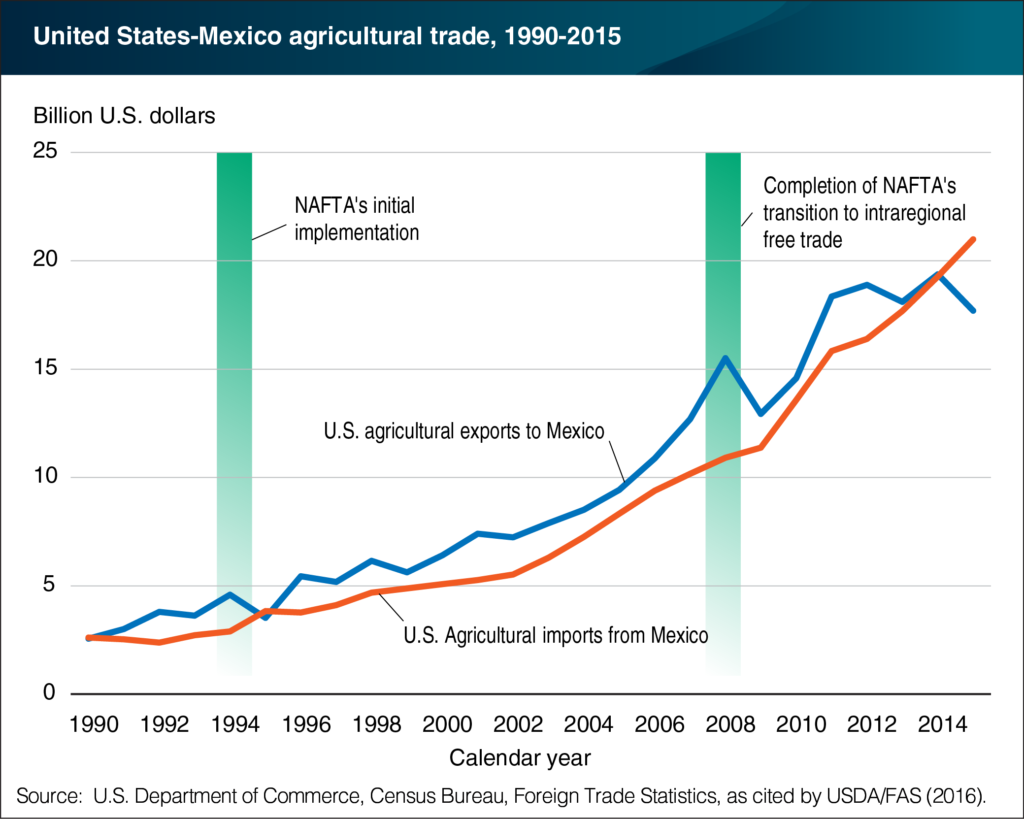As the United States and Mexico liberalized their bilateral trade, they continued to cooperate on sanitary, phytosanitary, and other regulatory issues affecting the agricultural sector. For example, new phytosanitary protocols (measures for the control of plant and animal diseases) enabled the export of Mexican avocados to the United States, while a coordinated campaign by all three NAFTA governments established a harmonized approach to mitigating the risks associated with bovine spongiform encephalopathy (BSE, often referred to as mad cow disease).
Together, this trade liberalization and continuing regulatory cooperation provided the policy setting for an increase in U.S.-Mexico agricultural trade. Between 1993 and 2015, U.S. agricultural exports to Mexico grew from $3.6 billion to $17.7 billion, while Mexican agricultural exports to the United States increased from $2.7 billion to $21.0 billion. The chart below appears in ERS’ report, Opportunities for Making U.S.-Mexico Agricultural Trade More Agile released in August 2016.


